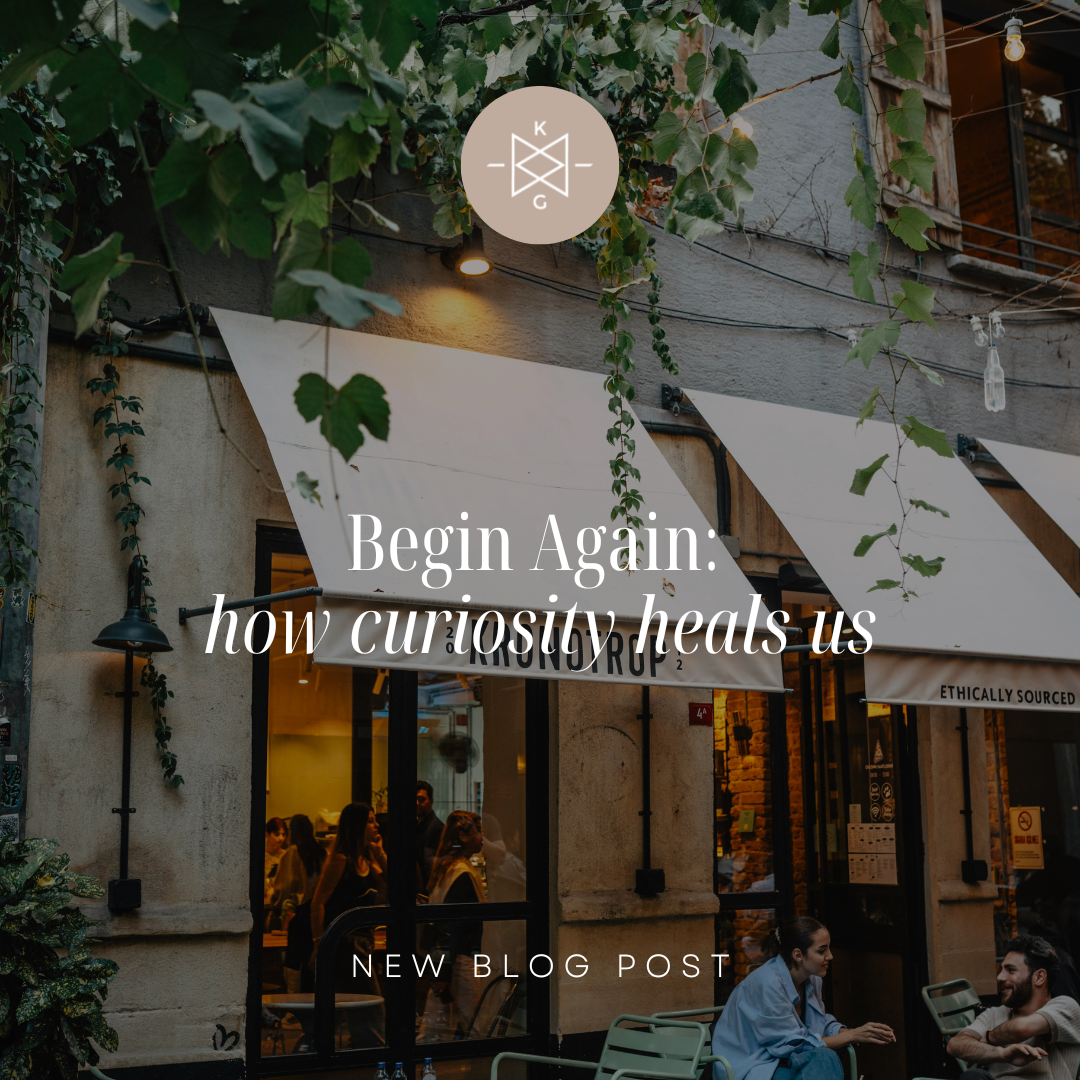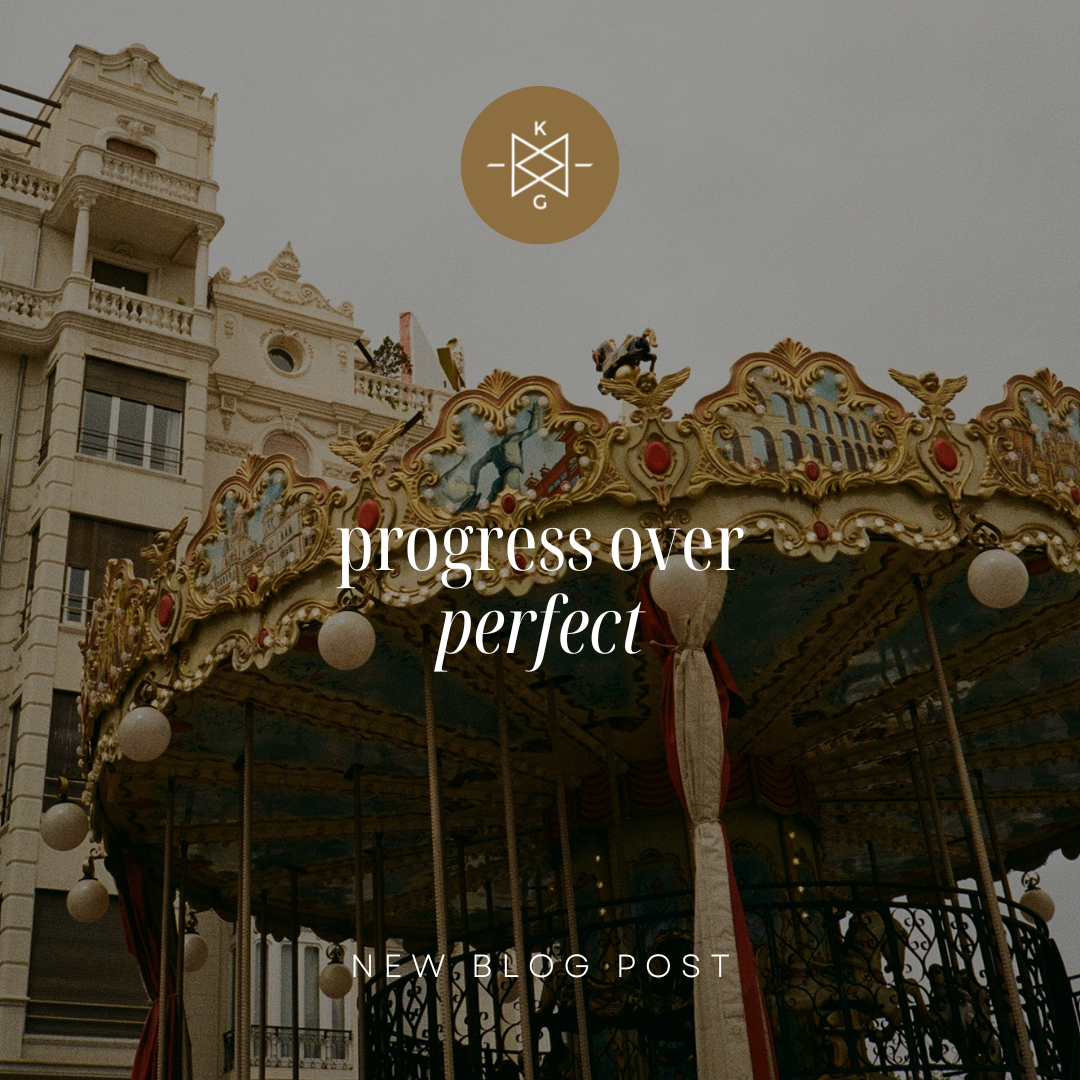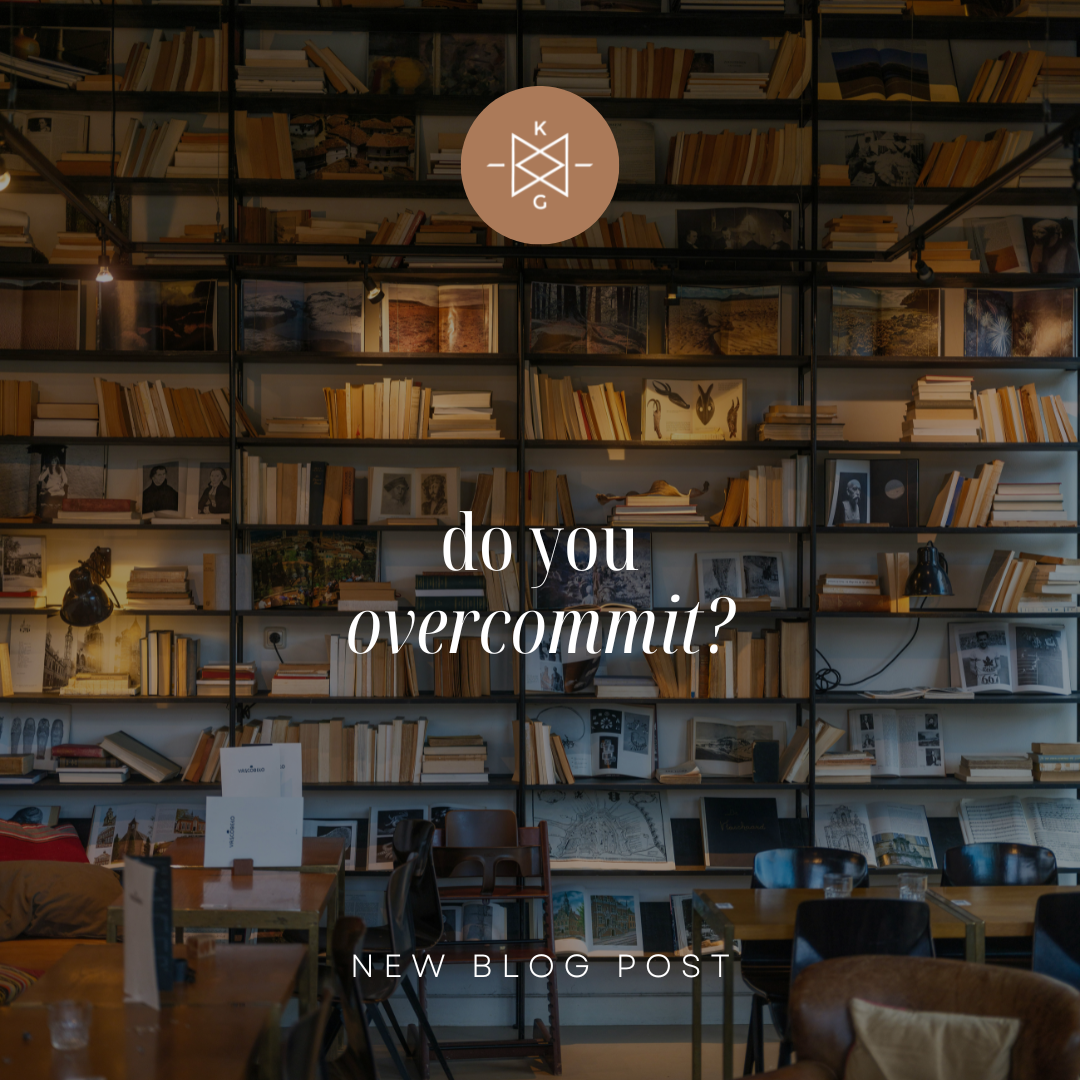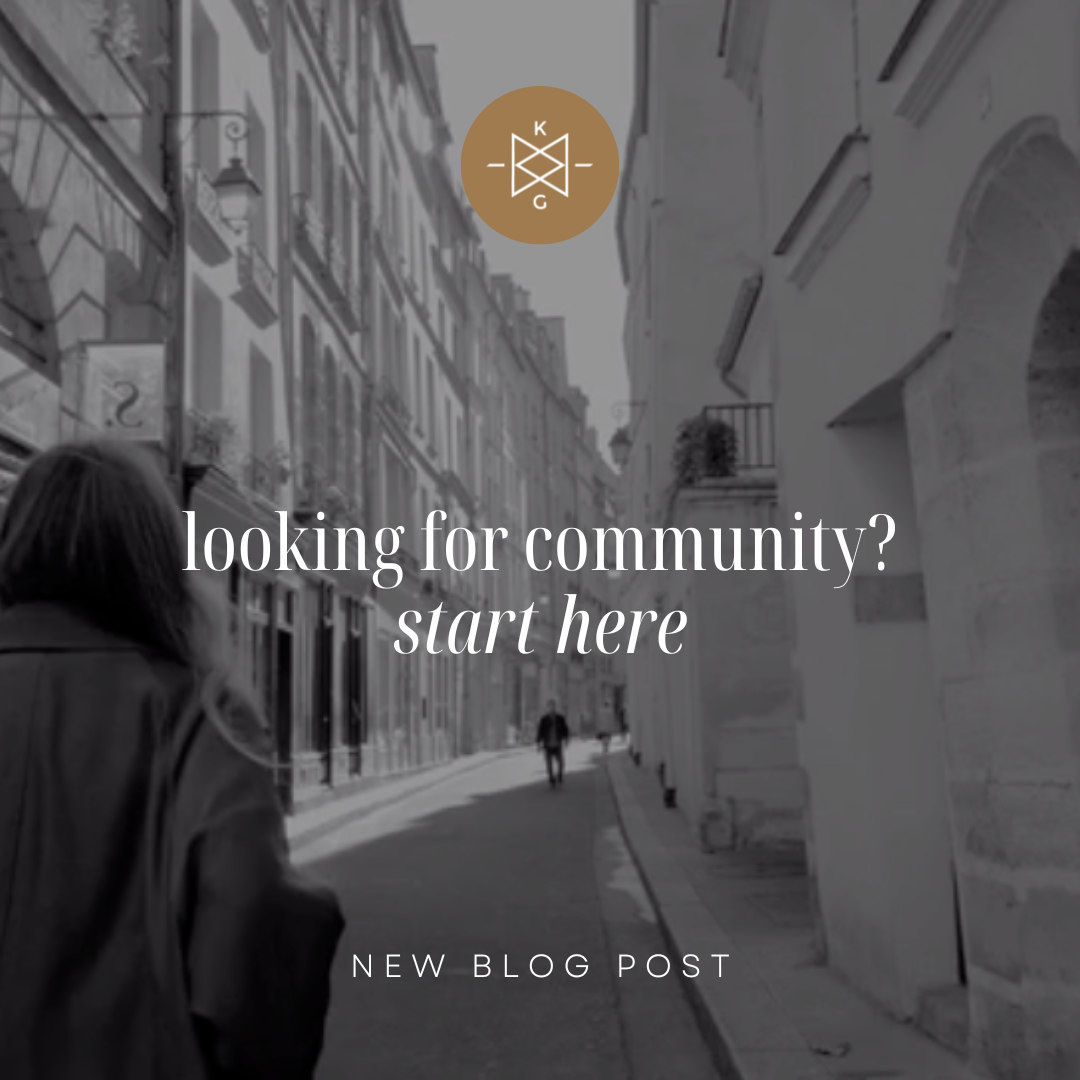
The Blog
Recently Featured
All Blogs
The Hospitality of Emotion
“People will forget what you said, forget what you did, but people will never forget how you made them feel.”
-Maya Angelou
I love hosting dinner parties: the planning, shopping, prepping, pairing, cooking, connecting, eating, lingering…hell, I don’t even mind the clean up so much. I’m pretty sure my most domestic moments happen in the kitchen. (Laundry? Not my gig, much to my husband’s chagrin.) Cooking has always been a creative outlet as well as a therapeutic one for me. For a hot minute in my mid-twenties I toyed with the thought of culinary school yet found in my short-lived career as a sous chef that cooking on someone else’s watch for people I couldn’t actually connect with was a deal breaker; it hijacked the joy for me.
I eventually discovered two real driving passions behind my love for all things culinary: the connection that happens around it and the creativity had in the process ( oh, and there is that eating thing as well). Hence, this favorite past time of mine—throwing dinner parties. I get a buzz just thinking about it.
We live in a world on crack: a world jacked up and in a constant crazed state of busy, exhausted, immediacy, devices, and traffic; all set to repeat. Hospitality has become a lost art because it forces us to slow down and do things that can be automated and/or bypassed by hitting the nearest Chipotle or even the newest foodie hot spot on the scene. As a result, we lose out on a beautiful process that facilitates good old fashioned real-time connection, intimacy, and laughter.
Last Fall, I hosted a cozy outdoor dinner party to itch that big ole scratch. It was everything. Having an outdoor, sit-down dinner party in the young days of November in Nashville is like betting your life savings at a craps table in Vegas. It’s risky if not ludicrous.
Much to our amazement, God flexed his creative muscles and painted the most magical fall scape one could possibly ask, or pray for. The wind, cold, and rain came to a precise halt. The sun-drenched rolling hills popped with a smattering of brick, gold, and orange. The burn your-eyes-out blue sky held on patiently all the way up to sunset. Between the outdoor heaters, cozy blankets strewn on every other chair, and the roaring conversation and laughter, we stayed warm well into the night. It was delicious and lovely complete with clinking glasses, a stained table runner, and hours of clean up the next morning. Perhaps my favorite part of the evening was the interesting mix of friends who came, both new and old. Stories were shared, intimate toasts given, and wild connections were made. It was truly a magical evening.
As I sat back contentedly and observed conversations happening across the table, glasses being filled, fall flavors offering up their glory, something occurred to me; something big.
Why can’t we learn to practice hospitality internally, with our own full cast of different parts and emotions? What if we welcomed them openly, leaning in to the complex story they are trying to tell instead of handing them the keys to our misery? I’ve been intrigued by this idea ever since, playing around with it in my head and heart…and I like it.
Emotions are a gift if you can believe it. I sure didn’t for long stretches of my existence. I always thought emotions had all the power, dictating the success of any given day from the moment my eyeballs popped open in the morning. I used to feel totally powerless over my emotions, especially anxiety, she was a loud and clumsy beast. What I have come to learn and embrace with open arms and a big fat sigh of relief is that my emotions are not who I am. Enneagram four much? I am not my anxiety, sadness, hurt, depression, etc.
They are also not against me. Of course, there are more enjoyable ones we feel such as glad and excited; we tend to coddle them like spoiled children. Then there are negative feeling ones such as guilt and anger we attempt to avoid like loud, messy roommates. However, the truth is they all invite us to the greater wisdom of our needs and desires. Our emotions are a gift nudging us towards a more colorful, expansive experience.
Just as the generous practice of hospitality beckons deeper connection and understanding of our unique perspectives and experiences across a dinner table, the inner landscape of our feelings long for a space to be heard. How will we host these voices and facilitate a curious exchange, an open conversation? Here are a couple of questions to ask them when they chime in, with their often abrasive tone.
What am I feeling? Sad, hurt, fear, anger, lonely, guilt, glad? Naming it identifies and externalizes it.
Where do I feel this feeling in my body? (Our bodies house emotions, memories, trauma, you name it! We need to wise up to this and get cozy communicating with it.)
What is the story you are trying to tell me? i.e “I am afraid I don’t have what it takes to succeed, I’m not enough.” “I am guilty because I spoke harshly to my co-worker.”
What is the need attached to the emotion? i.e. “I need some encouragement and affirmation,” or “I need to apologize for reacting at work, I was pretty fried and took it out on Sarah.”
How will I meet that need? i.e. Reach out to a trusted friend or have a conversation to set the record straight, etc…
Emotional hospitality removes unnecessary shame from our internal experience by letting light and air into dingy, dusty corners of our beings. It swings wide open the door of our heart and places a fresh mix of flowers on the table, welcoming deeper connection and cohesion. It nourishes our beings to live with presence and generosity. When we are willing to curiously experiment with each and every emotion, engaging it like we would a stranger at a dinner party, we gain new insight and perspective. We hear a new story. If we listen closely enough, we may even hear our own story.
Do you overcommit?
“Be who God meant you to be and you will set the world on fire.”
-Catherine of Siena
As an executive coach and therapist, (and work in progress), I’m constantly amazed by how hard it is for us to do what feels so simple and obvious—to practice. It seems we are so focused on leading and managing external demands, we ignore the internal ones. Oh, but there’s a big difference between leading your life and merely managing it. I believe we close this gap by developing self-awareness through simple practices.
Chances are, if you’re reading blogs about the Enneagram, emotional health, and self-development such as this one, or have sought therapy at some point, you’re a leader. Why? Because you are actively participating in cultivating the hidden potential in your life. You’re finding your edge and sharpening it.
I like Brené Brown's definition of a leader in her book, Dare to Lead: “Anyone who takes responsibility for finding the potential in people and processes, and who has the courage to develop that potential.”
Sounds doable, right? Within reach? Without a doubt, I believe it absolutely is.
Hold up though. If you and I are going to be leaders, developing and speaking into the lives of others, don’t we first need to lead our own lives fairly well? Otherwise, we prop up a flimsy facade of ego and lack the deep roots of character and credibility necessary to sustain leadership from a place of truth and integrity.
It’s the perfect opportunity to connect to the potential bubbling up under the surface and lead from a place of intention instead of reaction. How do we do this? I’m convinced the unsexy truth is we get really good at practice.
Practice what??
I’ve got three uber simple rituals for you to practice this week.
First thought: When your eyeballs pop open first thing in the morning, guess what? A first thought also starts to percolate. That first thought has the power to steer your day either north to abundance, or south, to scarcity. You have creative license to craft that thought, coloring the trajectory of your day. If that thought is, “I’m just so tired and didn’t get enough sleep.” Guess which direction your headed? Yep…going south. You’re in the driver’s seat though, so take a minute, first thing in the morning, to carefully choose the thought that will direct your day in the right direction. The scenery is much better on this route, I promise.
Gratitude: Throughout the day, take three one-minute breaks and identify at least one thing you are grateful for in the moment. Meal times are ideal to practice this as we (hopefully) slow down and hop off the treadmill of our day. The goal here: keep them simple (i.e. lungs that work, food to eat, a new day, a job or hobby, a dear friend.)
Belly-breathing: It’s fascinating to me that as a culture, we largely suck at breathing. Our overall vitality and quality of life immediately improves when we practice deep, steady breathing. But guess what? We’re just. so. damn. busy. I’m calling BS on busy. For at least one minute each day, practice slow, belly-breathing. Breathing into our belly, or body’s center of intelligence, brings a tangible feeling of groundedness. Place your hand on your belly and feel it rise and fall, like a cashed-out kid at naptime. We’re often so disconnected from our bodies, which stunts us from experiencing the fullness of each moment. Belly-breathing is the quickest way to connect us back to presence and the intelligent knowing of our bodies.
If these seem too pedestrian—or basic, for you as you step into CEO of YOU, guess what? Get over it. Tough love, my friend. The best musicians in the world got that way because they nailed the basics, and still practice them. We’re all guilty of getting in our own way by not practicing what we preach. My challenge to you is this: have the courage to do the small things that lead to big change. Inspire yourself so much that others start to lean into your light and see themselves in a new, empowered way. I’m pretty sure that’s called an icon…
How do you lead?
“One isn’t necessarily born with courage, but one is born with potential. Without courage, we cannot practice any other virtue with consistency.”
-Maya Angelou
As an executive coach and therapist, (and work in progress), I’m constantly amazed by how hard it is for us to do what feels so simple and obvious—to practice. It seems we are so focused on leading and managing external demands, we ignore the internal ones. Oh, but there’s a big difference between leading your life and merely managing it. I believe we close this gap by developing self-awareness through simple practices.
Chances are, if you’re reading blogs about the Enneagram, emotional health, and self-development such as this one, or have sought therapy at some point, you’re a leader. Why? Because you are actively participating in cultivating the hidden potential in your life. You’re finding your edge and sharpening it.
I like Brené Brown's definition of a leader in her book, Dare to Lead: “Anyone who takes responsibility for finding the potential in people and processes, and who has the courage to develop that potential.”
Sounds doable, right? Within reach? Without a doubt, I believe it absolutely is.
Hold up though. If you and I are going to be leaders, developing and speaking into the lives of others, don’t we first need to lead our own lives fairly well? Otherwise, we prop up a flimsy facade of ego and lack the deep roots of character and credibility necessary to sustain leadership from a place of truth and integrity.
It’s the perfect opportunity to connect to the potential bubbling up under the surface and lead from a place of intention instead of reaction. How do we do this? I’m convinced the unsexy truth is we get really good at practice.
Practice what??
I’ve got three uber simple rituals for you to practice this week.
First thought: When your eyeballs pop open first thing in the morning, guess what? A first thought also starts to percolate. That first thought has the power to steer your day either north to abundance, or south, to scarcity. You have creative license to craft that thought, coloring the trajectory of your day. If that thought is, “I’m just so tired and didn’t get enough sleep.” Guess which direction your headed? Yep…going south. You’re in the driver’s seat though, so take a minute, first thing in the morning, to carefully choose the thought that will direct your day in the right direction. The scenery is much better on this route, I promise.
Gratitude: Throughout the day, take three one-minute breaks and identify at least one thing you are grateful for in the moment. Meal times are ideal to practice this as we (hopefully) slow down and hop off the treadmill of our day. The goal here: keep them simple (i.e. lungs that work, food to eat, a new day, a job or hobby, a dear friend.)
Belly-breathing: It’s fascinating to me that as a culture, we largely suck at breathing. Our overall vitality and quality of life immediately improves when we practice deep, steady breathing. But guess what? We’re just. so. damn. busy. I’m calling BS on busy. For at least one minute each day, practice slow, belly-breathing. Breathing into our belly, or body’s center of intelligence, brings a tangible feeling of groundedness. Place your hand on your belly and feel it rise and fall, like a cashed-out kid at naptime. We’re often so disconnected from our bodies, which stunts us from experiencing the fullness of each moment. Belly-breathing is the quickest way to connect us back to presence and the intelligent knowing of our bodies.
If these seem too pedestrian—or basic, for you as you step into CEO of YOU, guess what? Get over it. Tough love, my friend. The best musicians in the world got that way because they nailed the basics, and still practice them. We’re all guilty of getting in our own way by not practicing what we preach. My challenge to you is this: have the courage to do the small things that lead to big change. Inspire yourself so much that others start to lean into your light and see themselves in a new, empowered way. I’m pretty sure that’s called an icon…
Looking for community? Start here...
“The way you get meaning into your life is to devote yourself to loving others, devote yourself to your community around you, and devote yourself to creating something that gives you purpose and meaning.”
When was the last time you really felt seen? Heard? When do you get to be squishy and vulnerable and feel the support of a loving, like-minded group? Where do you feel a deep sense of belonging?
If you had a shaky response to any of the above, consider this your invitation for more.
I became a therapist because I’d been a client my whole life. I wanted to meet people in the sacred and liminal spaces I’d been met by countless brilliant teachers (aka therapists.) About six years ago, I decided to go beyond the one on one work and offer this healing space to a group of women who loved the Enneagram almost as much as I did :) It’s not group therapy. And it’s not just lunch. It’s the Enneagram Mastermind and here’s a bit of what we explore:
The basics of the Enneagram, a powerful personality typing system
Your unique type and subtype
The motivation behind how you think, feel, and act
The story you’ve been living out of—and—is it really working?
The beauty and safety of sharing our stories
A deeper connection to self and others
A lot of laughter and fun
A delicious lunch :)
Also, you will develop some incredible, lasting friendships. Here’s a testimonial from Courtney, one of my OG Mastermind members.
Are you ready to take your Enneagram experience to the next level? Are you ready to feel the power of connection in community? Okay then…here’s your personal invitation. Join me this March 5 from 12-2pm for our kickoff in Brentwood TN.
I can’t wait to know you better real soon ;)
Why I fell in love with the Enneagram
“No prison is more secure than the one you don’t know you’re in.”
-William Shakespeare
I first learned of the Enneagram in 2006. My boss at the time kept talking in numbers and I felt incredibly curious if not left out of some grand, who’s who party. She was convinced I was a two. What does that even mean? What’s a two? And why not a seven? Even numbers are boring.
Whereas I had deep respect and trust for this woman, deep down, I simply couldn’t stomach the idea that I could be reduced to a number. This felt far too pedestrian, or boxy for the likes of me. I didn’t know it then, but I soon learned, this was the first clue I was not in fact a two, but a four, the Romantic.
I left work that day and ordered the only book I knew on the subject. The Enneagram: A Christian Perspective, by Richard Rohr and Andreas Ebert. I devoured that book like a marathon runner carb-loading before race day. Throughout the next several years, it became something of a Bible and an oxygen tank for me.
I won’t lie. For the first couple of years, I was “that girl” who’d try and type you in the Starbucks line. I’m pretty sure my friends and family were ready to issue a restraining order if I mentioned those damn numbers one more time. For this dogmatic behavior, I do apologize.
Here’s the thing though. We are all zealots in love during the honeymoon phase. All we want to do is talk about this flawless person (or system in my case) that can do no wrong and smells amazing. However, I believe true love far outlasts the honeymoon phase, deepening and morphing into what comes to feel like home.
Fast forward nearly two decades. I’m still in love with the Enneagram. As a wife, mom, psychotherapist, writer, teacher, and host, I can honestly say it’s the baseline I come back to for grounding and consistent insight amidst a world spinning on its head. It reminds me who I really am before I put on all those other hats. It continuously, graciously, calls me home to the truth of who I am.
The Enneagram is transformational, if we put it to good use. When I first discovered it, I had been battling intense depression, anxiety, and insomnia for years. I’d always sensed I was the odd man out who showed up underdressed and a day late to the Met Gala or something.
Shame was the pervasive emotion lighting the landscape of my experience as was an intense longing for a sense of completion—of meaning—to finally make herself known. I desperately wanted to be seen and known, as do all of us. My longings took the shape of self-destructive and melancholic tendencies. So much so that if I were to become “normal” or well, I might not have any identity at all.
The first time I read about type Fours, I literally cried. They were tears of joy and relief. Perhaps the despair and deficiency I’d known all along wasn’t what was wrong with me, but what was right with me because it pointed me towards a truer, bigger story of grace and compassion. What if…I wasn’t Crazy after all? Gasp.
Understanding my Enneagram type gave me an unspoken yet familiar language with which to relate to myself with kindness and compassion after the relentless self-loathing I’d been marinating in most my life.
This didn’t happen overnight. It’s been an ongoing process I’ll proudly be on for a long time. Yet the first step felt like one off a quickly sinking ship. Perhaps the biggest relief of all was that I was not in fact, alone. My story wasn’t haphazard. There was a clear path to take that would lead me each day a bit closer to home and the love and acceptance I longed to give myself.
I’ve worked with thousands of clients in my work as a psychotherapist, and I’ve been amazed by the pervasive nature of low-self worth and acceptance. I’ve found 98% of humans have a loud and nagging inner critic that won’t let them off the hook. In fact, this relentless critic is like a highly-introverted roommate, we barely even realize she’s there. After all, it is far easier and more socially encouraged to treat others with kindness than it is to show ourselves that same level of respect.
In my observance, a big reason we don’t allow ourselves the benefit of self-compassion to begin with is because we’ve been conditioned to hide or judge certain parts of ourselves that we or someone important to us has deemed unacceptable early on. If we were to connect to and love those parts, we wouldn’t be safe. Suffice it to say, the stories we come to believe about ourselves as children helped us survive and show up in the world. Survival is serious business. And we were brilliant in our survival strategies as kids.
If you’re ready to step into the bigger picture of you and edit those old wobbly narratives, I’d love to be your guide.
